Top 30 Most Popular Ethiopian Foods
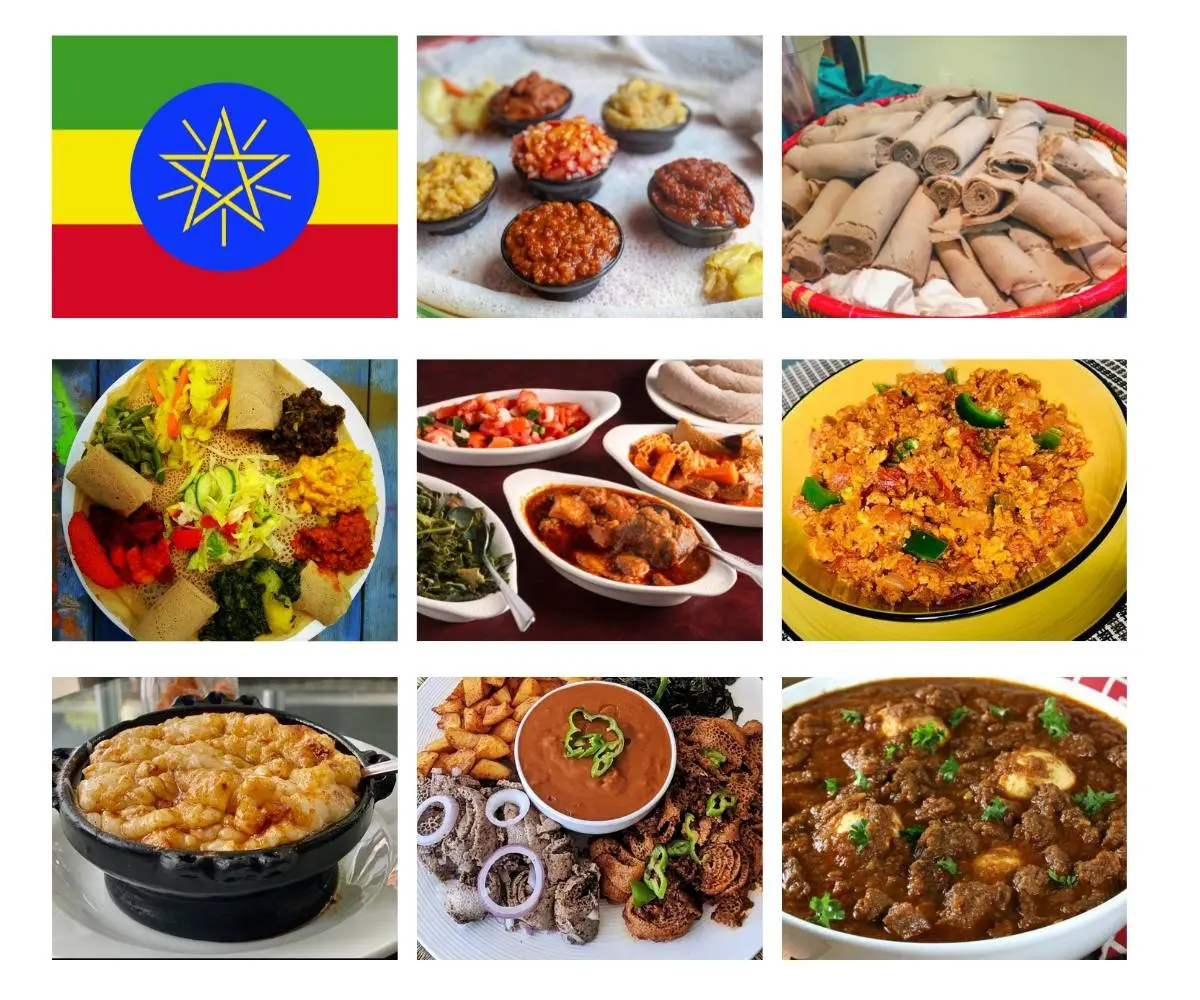
Ethiopia is a landlocked country in the Horn of Africa and one of the largest and most populated countries in the world. The Ethiopian diet is very healthy and full off nutritious minerals. There are some key ingredients and foods that are key features in Ethiopian cuisine.
Injera is a very popular accompaniment for most meals where people can scoop up their food. Injera is made with teff, a tiny, round grain that flourishes in the highlands of Ethiopia. Teff is very nutritious and contains practically no gluten. Torn off pieces of injera are used to scoop up thick vegetable or meat stews.
Ethiopian stews, or wots, are a mixture of ingredients creating very tasty dishes. Ethiopian cuisine is based on the stew (wot) and there are many varieties, all providing different taste experiences.
An important ingredient in Ethiopian food is the hot chili pepper Mitmita, which is often mixed with cardamom and salt, and other spices depending on the local culture. Unique to Ethiopia is the way kibbeh (butter) is prepared. It is made using spices such as cardamom, turmeric, garlic, and koseret (lippia abyssinica) and is a very common ingredient.
Ethiopians are Orthodox Christians and therefore observe Wednesdays and Fridays as fasting days when one meal is consumed in the late afternoon or evening. On these days, Ethiopians who observe the fasts abstain from eating animal products: meat, dairy, and eggs.
With two days a week of vegan dishes, the Ethiopian diet is a very healthy way to eat. Below is a list of the most popular Ethiopian foods.
Breakfast
1. Enkulal Ferfer (Scrambled Egg)

Enkulal ferfer is made from eggs, onion, butter, and chili pepper and is served with injera or bread. Most people prefer to eat enkulal ferfer for breakfast and it’s a popular food with toddlers and children.
2. Chechebsa

Chechebsa is another very tasty dish served for breakfast. It is prepared from chopped tortilla mixed with butter and berbere. It is usually eaten accompanied with a cup of tea or glass of milk.
3. Kinche (Oatmeal)

Another breakfast staple is kinche. It is made from kinche (oatmeal) and butter, and, if you like, milk. Most often a glass of milk is served alongside kinche.
4. Besso Ferfer

Besso ferfer is prepared from lightly roasted whole grain mixed with warm water, butter, and mitmita. It is another breakfast favorite served milk or tea. When fasting, butter is not included in the besso. It is also a popular food with toddlers and kids.
5. Genfo (Porridge)

Genfo is a simple dish made from dry roasted barley flour mixed with enough boiling water to make a smooth, yet thick consistency. Genfo is commonly eaten for breakfast and served with a mixture of berbere and butter.
6. Bula
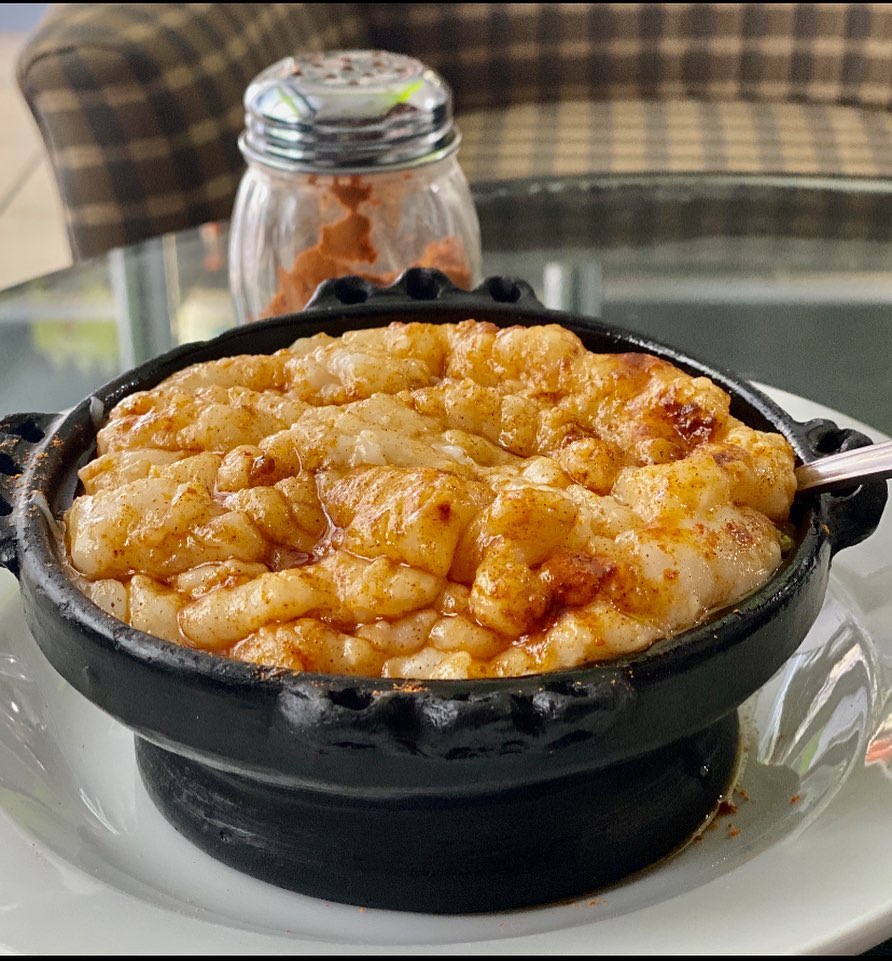
Bula is made from enset (a plant called Abyssinia banana that grows in southern Ethiopia). Bula is prepared in a similar way to porridge using enset and butter, and served for breakfast with a glass of milk.
Ethiopian Fasting Foods
7. Shiro

Ethiopians have a strong tradition of religious fasting: every Wednesday, Friday, and before every religious holiday. On these days, shiro is probably the most popular Ethiopian fasting dish.
Shiro is made from spiced chickpeas or bean puree, minced onions, garlic, and berbere, and is served with injera. Shiro is a very tasty dish and can be found just about all over the country. If you are eating shiro on non-fasting days, butter can be added.
8. Meser Wot (Lentil Stew)

Meser (red lentils) is a common dish for fasting days. It has a great taste and almost everyone in Ethiopia will choose meser when they need to avoid animal products.
It is also a dish served to guests when people get together for celebrations. The dish is prepared with meser (red lentils), onion, berbere, cardamom, garlic, and ginger. The meal is not complete without injera to scoop up the meser.
9. Gomen

Gomen is one of the tastiest dishes served on fasting days. It’s made from gomen (spinach), onion and spices such as cardamom and black cumin. Gomen is served on injera with mitmita. But Gomen is not only a food for fasting. It can also be served on non-fasting days as a side dish with Ayeb, which is a dry cottage cheese.
10. Azifa (Pardina Lentil)

Azifa (Pardina lentils) is a fasting food made from meser, onion, and chili pepper. Many people enjoy azifa because it is hot. Those who like a really hot dish simply add more chili pepper. It’s usually served with injera but it can also be served with bread.
11. Beyayenetu
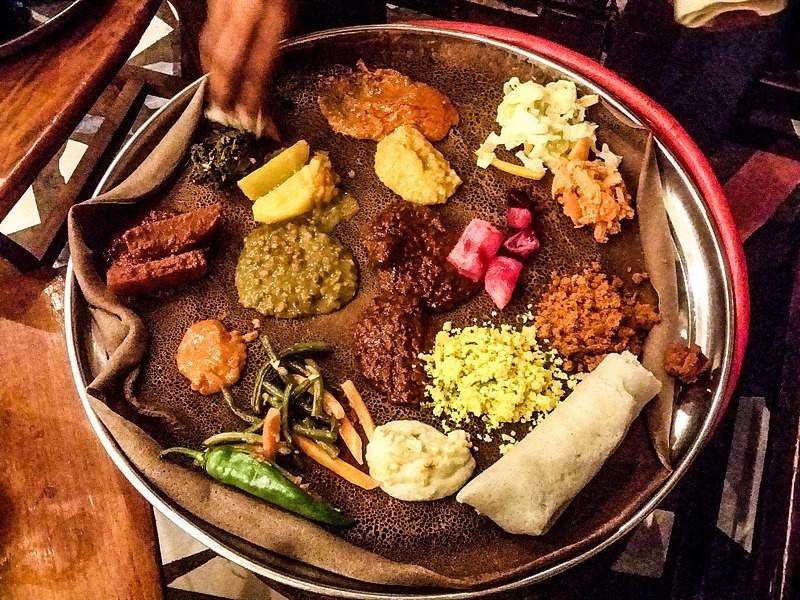
Beyaynetu is a fasting dish eaten all over Ethiopia. The word beyayenetu translates as “different types” and, as the name suggests, this dish is a combination of an array of fasting foods such as meser, gomen, vegetables, azifa, shiro, etc. all served on an large injera.
Beyayenetu is a dish for bringing people together and can be found all over the country.
12. Fasting Ferfer

Fasting Ferfer is commonly consumed during breakfast. It’s made from injera, onion, berbere, garlic, and chili pepper. There are two ways of making ferfer, with either berbere or turmeric. Those who want it hot use berbere, others make it with turmeric to give a lighter, yellowy color.
13. Keyeser (Beetroot)

Keyeser is prepared from keyeser (beetroot), onion, potato, and pepper. On fasting days, keyeser is served as part of a side dish along with other fasting dishes. There are two ways of making keyeser: with or without potato.
14. Tekel Gomen (Cabbage)

Tekel Gomen is a fasting food that is usually served as a side dish. It is made from tekel gomen (cabbage), onion, mitmita, garlic, and pepper and is served on injera. Depending on the cook’s preference, potato and carrot can be added to make it tastier and more colorful.
15. Fasting Fitfit

Fasting Fitfit is made from soya beans, injera, onion, berbere, tomato, garlic, and pepper. It is a dish often served at gatherings or religious holidays.
16. Salad

Ethiopian salad is prepared from lettuce, tomato, onion, pepper, and lemon. It is commonly served during fasting days and generally on injera or bread. It is also commonly added to beyaynetu.
17. Alecha Ater (Split Peas)

Ater (split peas) is one of the main fasting dishes and despite being a simple pulse, is very tasty. Ater is often the main dish served when people get together or on religious holidays. It is prepared with ater (split peas), onion, turmeric, cardamom, garlic, and ginger. And it is scooped up with injera, of course.
18. Fosoliya

Fosoliya is a fasting food made from fasoliya (Greek green beans), onion, tomato, carrot, rosemary, minced ginger, and garlic. Fosoliya is served with injera and it is also found on a beyayenetu dish.
Non-Fasting Foods
19. Doro Wot

Doro is a tasty Ethiopian dish that is mostly served on religious holidays and special occasions and offered as a sign of respect to welcome guests. Doro is prepared from a whole chicken cut into 12 parts and cooked with hot sauce of berbere, onion, cardamom, and butter. After it’s cooked, boiled eggs are added and it is served with injera.
According to Ethiopian tradition, all 12 parts of the chicken have specific names. The fereseya is given to the house owner (Abawera) and the mequadesha is given to married people. It is a special dish that requires time to prepare. A tasty dish of Doro will take a maximum six hours.
20. Tibs

Tibs is one of the most popular dishes for Ethiopians. It’s made from sliced beef, butter, garlic, chili, and onion. Tibs is a non-fasting food that is mostly served on holidays and special occasions. It is served with a hot sauce called “Awaze”.
Awaze is a mixture of berbere with tej or beer, but every family has their own secret way of making it. Injera is used to scoop up the tibs. Tibs are served to people as a compliment or to show respect.
21. Kitfo

Kitfo is yet another tasty dish that is served on holidays and special occasions. Serving someone kitfo is considered a big treat. It is made from the leanest minced meat, with a mixture of a little butter, mitmita, and cardamom and served on a warm pan. Kitfo can be prepared in three different ways, depending on how the meat is roasted.
Lebeleb is medium roasted, yetetebese is well done or roasted, and it can be served raw, that is, without roasting it at all. Kitfo is served with ayeb (dry cottage cheese), and gomen (minced spinach), and the bread-like kocho is used to scoop it up. Kitfo is served on a special clay plate called a “Taba”.
22. Menchet Wot

Menchet wot is prepared from minced meat cooked with berbere, minced onion, cardamom, garlic, ginger, and butter. It is served on injera with boiled egg. Menchet is a very commonly eaten during non-fasting times as most Ethiopians simply love this dish.
23. Kekel

Kekel is a non-fasting food that is usually eaten during holidays. It’s made from the bones of an ox or a sheep and onion, mitmita, butter, and other spices that gives the kekel a good taste.
As always, kekel is served with injera. The dish also has medicinal properties. The juices are served as a soup to treat colds or flu. Kekel is also served to help mend broken bones.
24. Keye Sega Wot

Keye wot is a non-fasting food made from chopped meat cooked with berbere, onion, garlic, ginger, and butter and served on injera. Keye wot is one of the main dishes served on holidays and special occasions. Ayeb is often served as a side dish to keye wot.
The reason for this while keye wot is very tasty, it is also a very hot dish and the ayeb helps to reduce the heat.
25. Alecha Sega Wot

Alecha wot is another non-fasting food made from chopped meat cooked with onion, turmeric, garlic and butter. Similar to keye wot, it is also served with injera.
Alecha wot is a commonly consumed dish that will be served on holidays. The main difference between keye wot and alecha wot is that keye wot has berbere in it, giving the dish a hot and spicy taste, while alecha is not hot. Because of this, the young prefer alecha.
26. Dulet
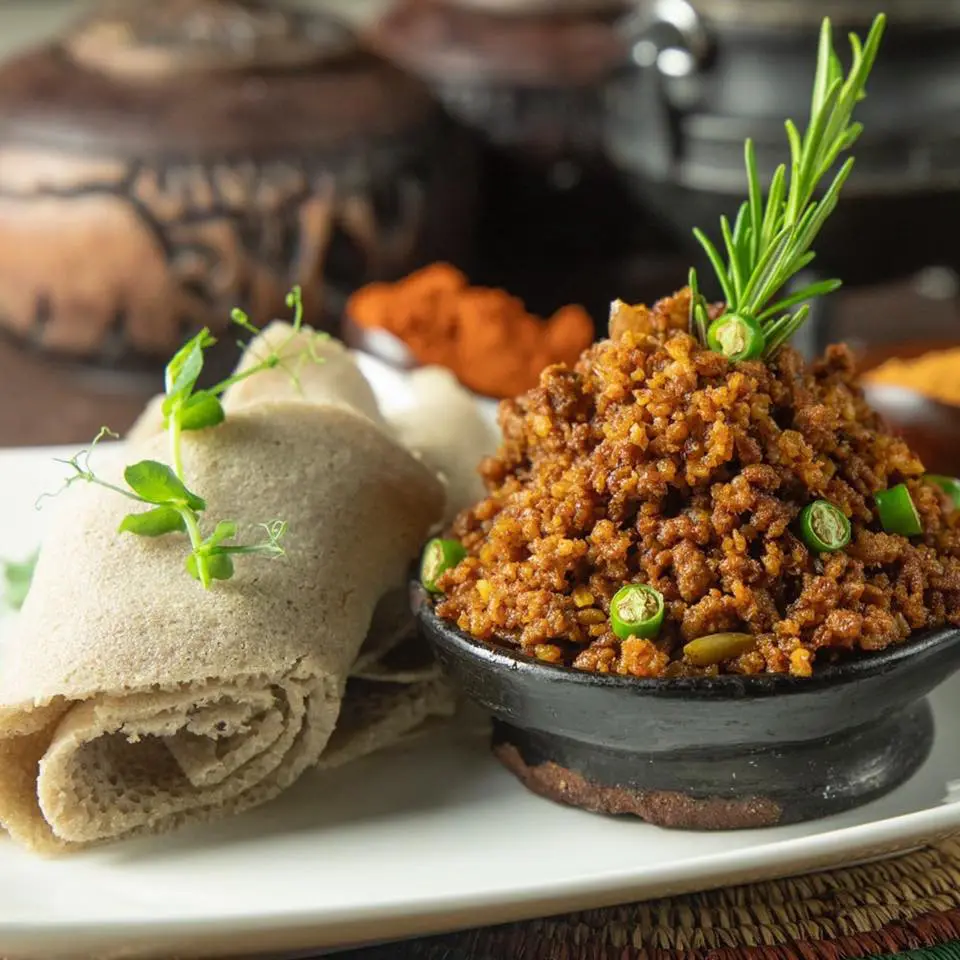
Dulet is a special non-fasting dish made from ox or sheep kidney, tripe, liver, mitmita, onion, black pepper, cardamom, butter, and chili pepper.
It is usually prepared on holidays and served with injera. Dulet is prepared in small portions, giving everybody a tiny portion; as children, nobody would share their dulet. It is a small dish with a big taste that everybody loves.
27. Tripa

Tripa is prepared from tripe, carrot, onion, cardamom, butter, and pepper. It is a special non-fasting dish served on injera.
28. Non Fasting Ferfer

This ferfer is eaten for breakfast on non-fasting days. It’s made from chunks of injera, chopped meat, onion, berbere, garlic, butter, and chili pepper. Ferfer is a common food found in every part of the country as it is very tasty and only takes a few minutes to prepare.
Ethiopian Seafood Dishes
29. Fish

Ethiopian fish has a unique taste due to the spices added to the roasting fish. It’s made from fish, garlic, ginger, and flour. Fish is served with bread and lemon; the lemon helps to soften the fish bones.
In some parts of Ethiopia, raw fish is eaten with awaze but, to eat it raw, it has to be very fresh, that is, right after it is caught. It is not advisable to eat it raw otherwise as it quickly goes bad.
Ethiopian Soups
30. Soup

Soup in Ethiopia is prepared from lentil, onion, carrot, potato, macaroni, garlic, ginger, and cabbage. Most commonly, soup is served at dinner time and all family members gather around and enjoy the soup together. It is usually served with bread but can also be served with injera, depending on preference.
Related: Popular Ethiopian Christmas Foods

Related: Popular Ethiopian Desserts
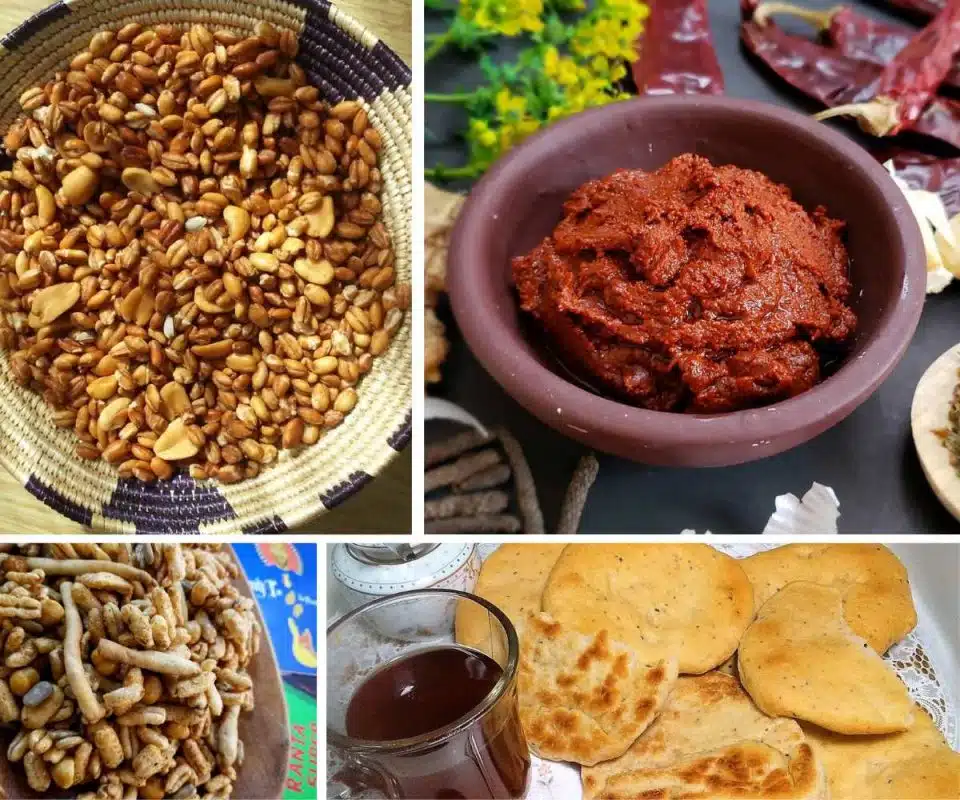
Related: Most Popular Kenyan Dishes

